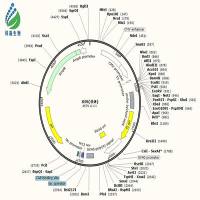32P-Postlabeling Analysis of DNA Adducts
互联网
730
32 P-Postlabeling analysis is an ultrasensitive method for the detection of DNA adducts, such as those formed directly by the covalent binding of carcinogens and mutagens to bases in DNA, as well as other DNA lesions resulting from modification of bases by endogenous or exogenous agents (e.g., oxidative damage). The procedure involves four main steps: enzymatic digestion of a DNA sample; enrichment of the adducts; radiolabeling of the adducts by T4 kinase-catalyzed transference of 32 P-orthophosphate from [γ-32 P]ATP; and chromatographic separation of labeled adducts and detection and quantification by means of their radioactive decay. Using 10 μg or less of DNA, this technique is capable of detecting adduct levels as low as one adduct in 109 –1010 normal nucleotides. It is applicable to a wide range of investigations, including monitoring human exposure to environmental or occupational carcinogens, determining whether a chemical has genotoxic properties, analysis of the genotoxicity of complex mixtures, elucidation of the activation pathways of carcinogens, and monitoring of DNA repair.








